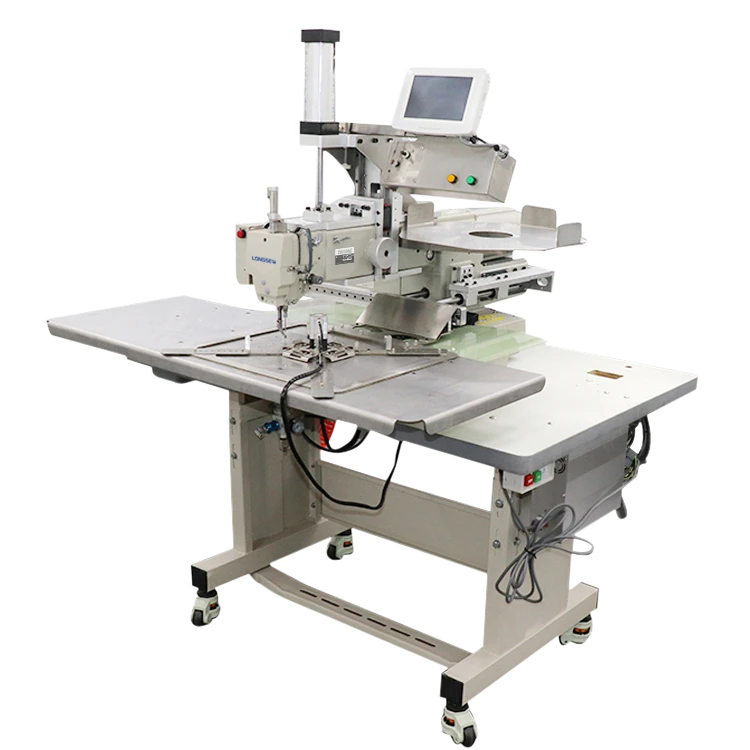Innovations in Automated Sewing Machines for Enhanced Efficiency and Precision
The Evolution and Future of Automation Sewing Machines
The textile and garment industry has undergone significant transformations over the years, and one of the most impactful advancements has been the development of automation sewing machines. These technological marvels have not only revolutionized the way clothing is produced but have also enhanced efficiency, precision, and the overall quality of textile products. As we delve into the evolution, current applications, and potential future of automation sewing machines, it becomes evident that they play a critical role in shaping the future of the fashion and textile industry.
Historical Context
Sewing, a craft that dates back thousands of years, saw its first major automation breakthrough in the 19th century with the invention of the sewing machine by Elias Howe and Isaac Singer. These early machines significantly reduced the time required to sew garments and led to the mass production of clothing. However, the sewing processes were still largely manual, requiring skilled operators to manage the machines and make adjustments.
The late 20th century witnessed the introduction of computerized sewing machines, which brought a level of sophistication and accuracy previously unseen. These machines enabled more intricate designs, automated pattern recognition, and improved the overall production speed. As the demand for fast fashion and customized clothing surged, the industry began adopting more advanced automation technologies.
The Current Landscape
Today, automation sewing machines incorporate a range of advanced features that enhance productivity and streamline the manufacturing process. For instance, many modern sewing machines are equipped with sensors and cameras that allow for real-time monitoring and adjustments. These innovations minimize human error and ensure consistent quality across large production runs.
Robotic sewing systems represent one of the most significant advancements in automation sewing technology. These systems can operate independently, sewing complex patterns and managing tedious tasks that were once the domain of human workers. By using artificial intelligence, these machines learn over time and optimize their operations, allowing manufacturers to produce garments with unprecedented efficiency.
Moreover, the integration of artificial intelligence (AI) and machine learning in automation sewing machines allows for predictive maintenance, inventory management, and the ability to adapt to new patterns and designs without extensive reprogramming. This adaptability is essential in today's fast-paced fashion industry, where trends can change overnight.
automation sewing machine

Benefits of Automation Sewing Machines
The benefits of automation sewing machines are manifold. Firstly, they significantly reduce production time, enabling manufacturers to meet tight deadlines associated with fast fashion. With improved speed comes the ability to respond swiftly to market demands, leading to increased competitiveness.
Secondly, automation machines enhance precision and consistency. With human error minimized, the quality of each garment remains high, fostering customer satisfaction and brand loyalty. This consistency also reduces waste, as fewer defective items mean less fabric and resources used.
Furthermore, automation can improve working conditions for employees. By taking over repetitive and strenuous tasks, these machines allow workers to focus on more skilled roles, potentially leading to higher job satisfaction and reduced physical strain.
The Future of Automation Sewing Machines
Looking ahead, the future of automation sewing machines appears promising. As technology continues to evolve, features such as augmented reality (AR) could provide operators with enhanced visualizations for complicated sewing processes. Additionally, integrating blockchain technology could enhance transparency and traceability in the supply chain, addressing growing consumer concerns regarding ethical production and sustainability.
Moreover, sustainability is becoming increasingly important in the fashion industry. Automation sewing machines can contribute to more sustainable practices by optimizing fabric usage, reducing waste, and enabling the production of eco-friendly textiles. As consumer awareness of environmental issues grows, the demand for sustainable production methods is likely to rise, further driving the adoption of automation technology.
In conclusion, automation sewing machines represent a significant leap forward in the textile and garment industry, facilitating faster, more precise, and sustainable production methods. As the industry continues to adapt and innovate, embracing these technological advancements will be crucial for manufacturers aiming to thrive in an increasingly competitive marketplace. The future holds immense potential for automation sewing machines, promising a new era of efficiency and quality in clothing production.
-
Industrial Cylinder Arm Sewing Machine: Revolutionizing Heavy-Duty SewingNewsJul.28,2025
-
Cylinder Arm Sewing Machine: Perfect for Special Sewing ApplicationsNewsJul.28,2025
-
Cylinder Bed Sewing Machine: Essential for Sewing Complex MaterialsNewsJul.28,2025
-
Heavy Duty Sewing Machine: The Essential Tool for Industrial ApplicationsNewsJul.28,2025
-
Computerized Pattern Sewing Machine: Revolutionizing Precision StitchingNewsJul.28,2025
-
Heavy Duty Industrial Sewing Machine: Power Meets PrecisionNewsJul.28,2025
-
Leather Sewing Machine: The Industrial Standard for Tough MaterialsNewsJul.18,2025


























